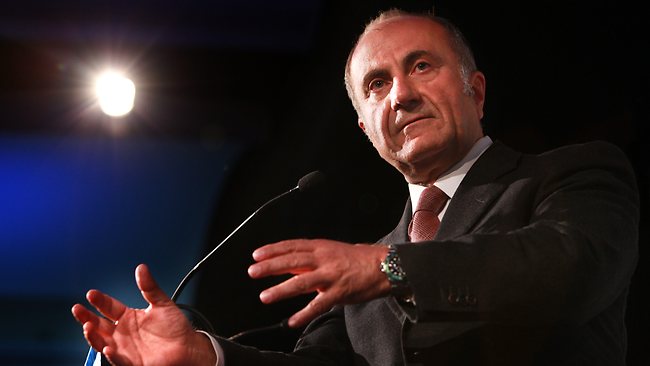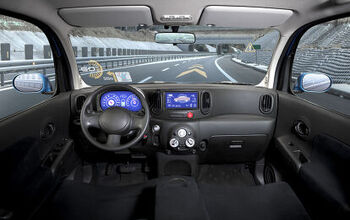Ex-Ford CEO Says Australian Car Industry Is Dead
Jac Nasser, the former head of Ford, is warning that Australia’s car industry has passed the point of no return, and expects to see it die within the next few years.
Nasser placed the blame at the politicians doorstep, citing a dearth of state subsidies for the auto industry and a lack of clear vision on the part of politicians for the decline of Australia’s domestic car industry, which employs some 224,000 people. While Holden, Ford and Toyota are the big name vehicle assemblers, the vast majority of jobs come from parts suppliers rather than the manufacturers themselves. The Australian quotes Nasser as outlining the challenges ahead for Australia
“The signs aren’t good,” he said yesterday. “You’ve got an exchange rate at a 30-year high, you’ve got higher costs in Australia, you’ve got excess capacity in the motor industry worldwide, you’ve got a very weak currency in Japan and you’ve got a weak euro. When you put that mix together, it’s very difficult to expect a relatively small but talented Australian auto industry to work its way.
As soon as you have a reduction in the scale of domestic manufacturing – let’s assume one of the three decide to exit Australia in terms of manufacturing – then you end up potentially with sub-scale supplier infrastructure…Once that happens, I think it’s a domino effect. It would be a very sad day for Australia but unfortunately it looks like it could be inevitable.”
One of the major issues cited by many observers (as well as the B&B) is that of tariffs. A report in the Australian business publication BRW states
Australian tariffs on imported motor vehicles fell to 5 per cent by 2010 from 10 per cent in 2005. Where Australia has a free trade agreement, there is a zero tariff. Industry bodies such as the Federation of Automotive Products Manufacturers (FAPM) say the hurdles on entry of foreign vehicles are much lower than those imposed by other car manufacturing jurisdictions and the country should demand reciprocity on tariffs with other producing countries.
The reduction in tariffs is often cited as a reason for the freefall of traditional Australian-made vehicles like the Ford Falcon and Holden Commodore. The big Australian iron has been replaced at the top of the sales charts by vehicles like the Mazda3 and Toyota Corolla and Hyundai i30, as well as the Toyota Hilux and Nissan Navarre pickups, all of which are made offshore. At the end of the quarter, the Commodore was just barely hanging on in 9th place, while its perennial rival the Falcon ranked a dismal 37th in the sales standings.
More by Derek Kreindler
Latest Car Reviews
Read moreLatest Product Reviews
Read moreRecent Comments
- 1995 SC The Ridgeline is too new so nothing yet.The FIAT needed a tire (nail in the sidewall) and a lower steering column cover and a set of wipers. Around 200 bucksThe 30 year old Thunderbird has been needy this year. Just did fuel injectors to add to belts, hoses, motor mounts, exhaust manifold gasket, shocks and a bunch of caps replaced on various modules.Rear main has developed a small leak so I will probably have the transmission gone through when I drop it. I want to do a few things to it. I have some upgraded front calipers too but they are junk yard parts I rebuilt. Like I said, it has been needy this year but old cars do that sometimes
- Tane94 Mini annual oil change at dealership, synthetic oil and new filter, $129 but sometimes $99 when a coupon is offered.
- Mike Beranek All that chrome on the dashboard must reflect the sun something fierce. There is so much, and with so many curves, that you would always have glare from somewhere. Quite a contrast to those all-black darkroom interiors from Yurp.
- Mike Beranek 2004 Buick LeSabrepurchased in 2017, 104k, $3,100currently 287knever been jumped never been on a tow truckstruts & shocks, wheel bearings, EGR valves. A couple of O2 sensors, an oil pressure sending unit, and of course the dreaded "coolant elbows". All done in my garage with parts so plentiful there are a dozen choices of everything on Rock Auto.I've taken it to the west coast twice and the east coast once. All-in I'm under 5 grand for over 180,000 reliable miles. Best used-car purchase ever.
- Jalop1991 Our MaintenanceCosts has been a smug know-it-all.


































Comments
Join the conversation
What does Canberra woman drive - ebike? Time for Howard Holt swim. Down under a knight fallen on sword. Mel & Syd shovel hungry red dragon raped commodities. Frothy golden shores swamped by neighbours. The largest island will lay forgotten by pomes & yanks. That includes Hobbit economy cross the water.
I agree with Mr. Nasser. In the last 30 years so many things have changed in the world of auto manufacturing and all of them work against local production of cars in Oz. 1. The unique Aussie car for unique local conditions was a requirement when we had many unsurfaced roads and American cars were too soft as they had not yet invented road holding. 2. Japanese cars were crap and the Chinese and Korean manufacturers were not here. Now all those cars are much, much better. 3. High tarriffs kept the furriners out. In the last decades we have seen the arrival of Seat, Lexus, Kia, Opel, Infiniti, Skoda and many more I cannot think of right now. 4. The family road trip was THE AUSSIE holiday. These days the kids would rather play with their phone. In fact, they would rather walk over hot coals. 5. Nobody but the Yanks made a competitor to the full size family sedan. Now I think the Corolla is approaching that capability as everything has grown. 6. Shipping was expensive. Today, 100,000 ton container ships bring loads of Asian cars and trucks for pennies. Spares follow. 7. Car manufacture was high tech and labour intensive. Today they are turned out like washing machines. We should not be subsidising industries just to support jobs that are ultimately doomed anyway.